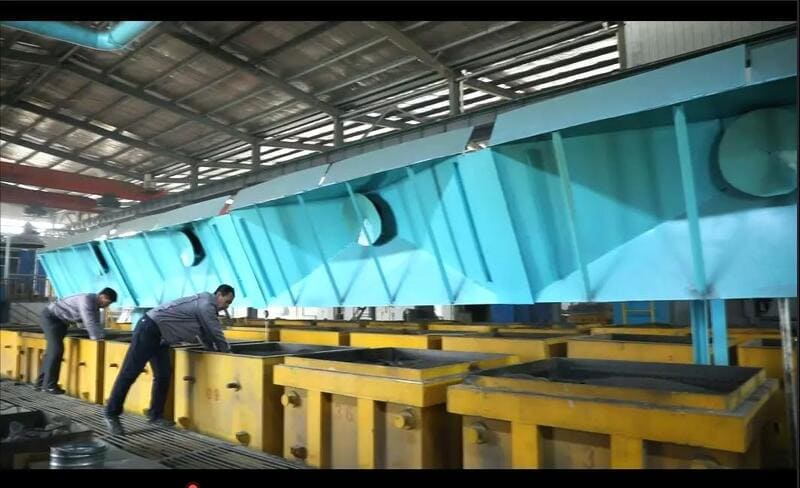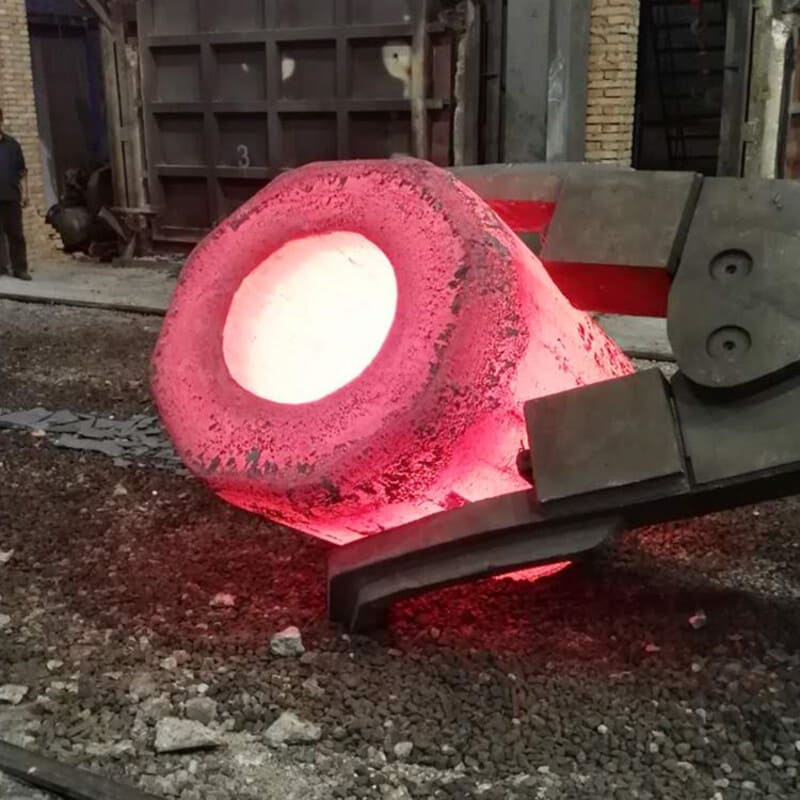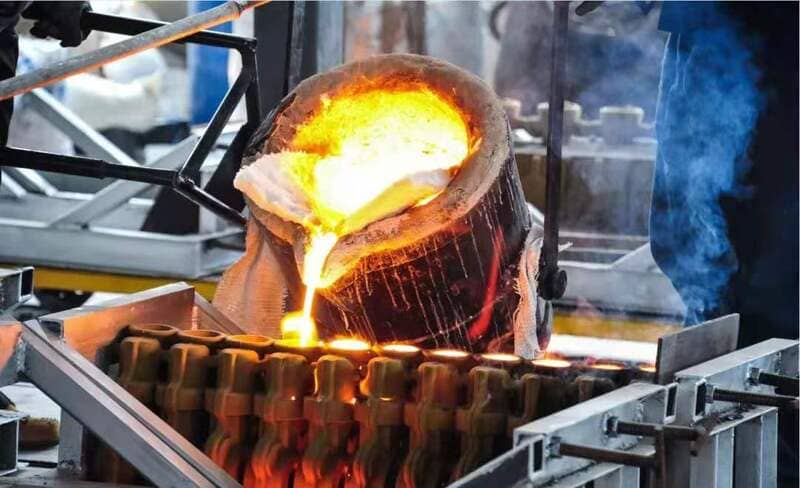The casting is formed by integral pouring of the material in the mold, and its stress distribution is uniform, and there is no restriction on the direction of compression. The forgings are pressed by forces in the same direction, and their internal stresses are directional and can only withstand directional pressure.
Casting

- Casting: It is the process of smelting metal into a liquid that meets certain requirements and pouring it into a mold. After cooling, solidification, and cleaning, a casting (part or raw casting) with a predetermined shape, size and performance is obtained. The basic technology of modern machinery manufacturing industry.
- The cost of the raw casting is low, and it can show its economical efficiency for parts with complex shapes, especially with complicated inner cavities; at the same time, it has wide adaptability and better comprehensive mechanical properties.
- However, the materials (such as metal, wood, fuel, molding materials, etc.) and equipment (such as metallurgical furnaces, sand mixers, molding machines, core making machines, shakeout machines, shot blasting machines, cast iron plates, etc.) required for casting production are more Many, and will produce dust, harmful gases and noise and pollute the environment.
- Casting is an earlier metal thermal processing technology that mankind has mastered, and it has a history of about 6000 years. In 3200 BC, copper frog castings appeared in Mesopotamia. Between the 13th and the 10th century BC, China has entered the heyday of bronze castings, and the craftsmanship has reached a very high level, such as the 875 kg Simuwu Fang Ding of the Shang Dynasty, the Zenghou Yizun plate of the Warring States Period and the Western Han Dynasty. The translucent mirrors are all representative products of ancient casting. Early casting was greatly influenced by pottery. Most of the castings were tools or utensils used in agricultural production, religion, and life, with a strong artistic color. In 513 BC, China cast the world’s first iron casting found in written records-the Jin State Casting Tripod (approximately 270 kg). Around the 8th century, Europe began to produce iron castings. After the Industrial Revolution in the 18th century, castings entered a new era of serving large industries. In the 20th century, the rapid development of casting has been developed. Nodular cast iron, malleable cast iron, ultra-low carbon stainless steel, aluminum copper, aluminum silicon, aluminum-magnesium alloy, titanium-based, nickel-based alloy and other casting metal materials have been developed. A new process for inoculation of cast iron. After the 1950s, new technologies such as green sand high-pressure molding, chemical hardening sand molding and core making, negative pressure molding, and other special casting, shot blasting, etc. appeared
- There are many types of casting, which are divided into: ① Ordinary sand casting, including 3 types of green sand, dry sand and chemical hardened sand. ② Special casting, according to the modeling material, can be divided into special casting with natural mineral sand and gravel as the main modeling material (such as investment casting, clay casting, casting workshop shell casting, negative pressure casting, solid casting, ceramic casting Etc.) and special casting with metal as the main casting material (such as metal mold casting, pressure casting, continuous casting, low pressure casting, centrifugal casting, etc.)
- The casting process usually includes: ① Preparation of casting molds (containers that make liquid metal into solid castings). The casting molds can be divided into sand molds, metal molds, ceramic molds, clay molds, graphite molds, etc. according to the materials used, and can be divided into one time according to the number of uses The main factors affecting the quality of castings are the quality of castings, semi-permanent, and permanent. ②Melting and pouring of cast metals. Casting metals (casting alloys) mainly include cast iron, cast steel and cast non-ferrous alloys; ③ Castings Processing and inspection, casting processing includes removing foreign matter on the core and casting surface, removing pouring risers, shoveling burrs and draping seams and other protrusions, as well as heat treatment, shaping, anti-rust treatment and rough machining, etc.
Forging

- Forging: It is a processing method that uses forging machinery to apply pressure to metal blanks to produce plastic deformation to obtain forgings with certain mechanical properties, certain shapes and sizes.
- One of the two major components of forging. Through forging, the as-cast looseness of metal and welding holes can be eliminated, and the mechanical properties of forgings are generally better than those of castings of the same material. For the important parts of machinery with high load and severe working conditions, forgings are mostly used in addition to simpler shapes that can be rolled, profiles or welded parts.
- According to the forming method, forging can be divided into: ① Open forging (free forging). Use impact or pressure to deform the metal between the upper and lower anvils (anvils) to obtain the required forgings. There are mainly manual forging and mechanical forging. ② Closed mode forging. The metal blank is compressed and deformed in the forging die cavity with a certain shape to obtain forgings, which can be divided into die forging, cold heading, rotary forging, and extrusion. According to the deformation temperature, forging can be divided into hot forging (processing temperature higher than the recrystallization temperature of the blank metal), warm forging (lower than the recrystallization temperature) and cold forging (normal temperature).
- Forging materials are mainly carbon steel and alloy steel with various compositions, followed by aluminum, magnesium, titanium, copper, etc. and their alloys. The original state of the material includes bar stock, ingot, metal powder and liquid metal. The ratio of the cross-sectional area of the metal before deformation to the die cross-sectional area after deformation is called the forging ratio. The correct selection of forging comparisons has a lot to improve product quality and reduce costs.
The identification of castings and forgings
1. For the fine density of the surface structure of the forging, the surface of the casting should be thicker, and the machined surface of the forging should be brighter.
2. The cross section of cast iron is gray and dark, while the cross section of forged steel is silvery.
3. Listen to the sound, the forging is dense, the sound is crisp after the blow, and the casting sound is dull.
4. Polish with a grinder to see that the sparks of the two are different (brightness of the forging), etc.

